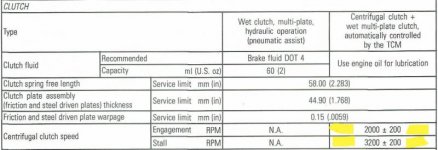Sarge707
Active member
I Have both-09SE5 and 2012RT Manual.
I love having both _Keeps my brain busy- Like the downshifting around corners on the manual- Only thing I could do without on the Manual is the Initial start in 1st gear? Would not win a drag race with it.
SE5 is Also great and requires little thought so I can "Day Dream" More- Fast as L through the gears BUT have to change 2 filters.
If somneone GAVE me $1,500 dollars the day I bought the RT I would have got another Auto BUT that being said I,m happy I have the Opportunity to drive Auto one day and Manual the next day!!!!!!!!!:bowdown:
I love having both _Keeps my brain busy- Like the downshifting around corners on the manual- Only thing I could do without on the Manual is the Initial start in 1st gear? Would not win a drag race with it.
SE5 is Also great and requires little thought so I can "Day Dream" More- Fast as L through the gears BUT have to change 2 filters.
If somneone GAVE me $1,500 dollars the day I bought the RT I would have got another Auto BUT that being said I,m happy I have the Opportunity to drive Auto one day and Manual the next day!!!!!!!!!:bowdown:


